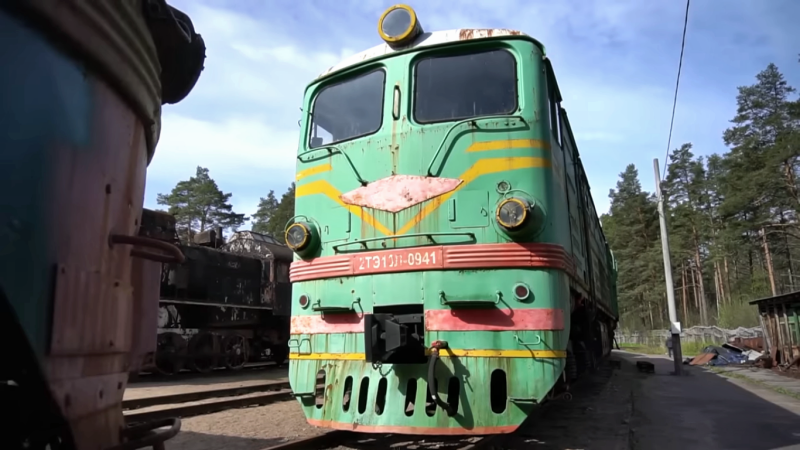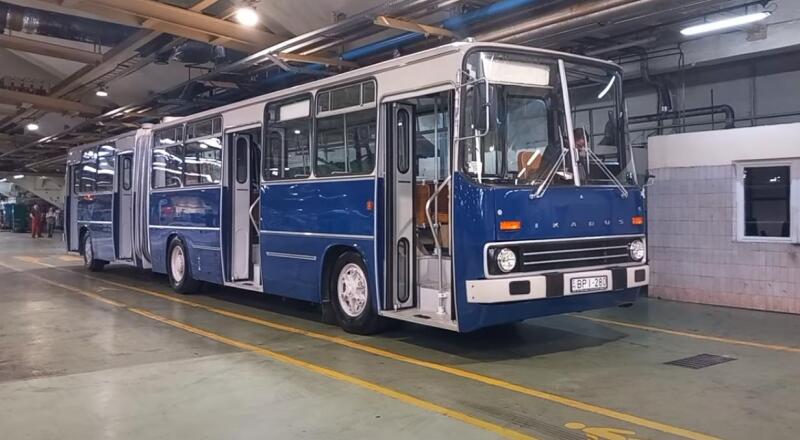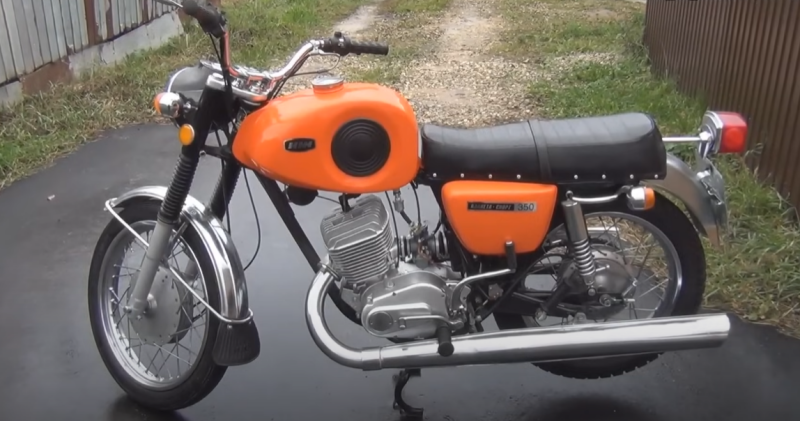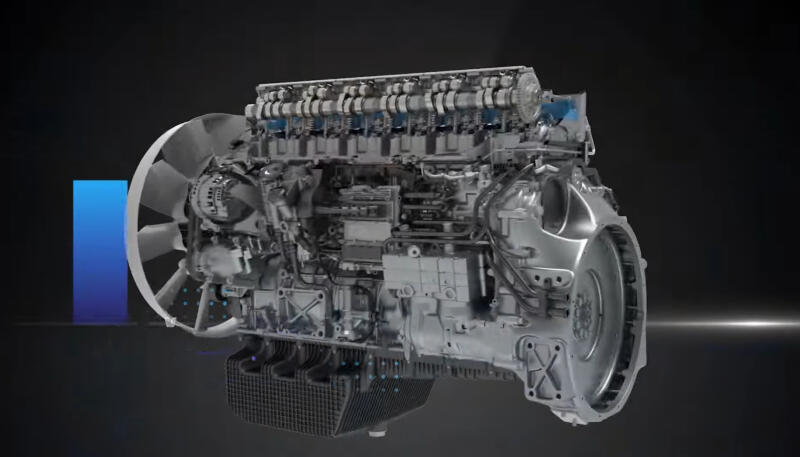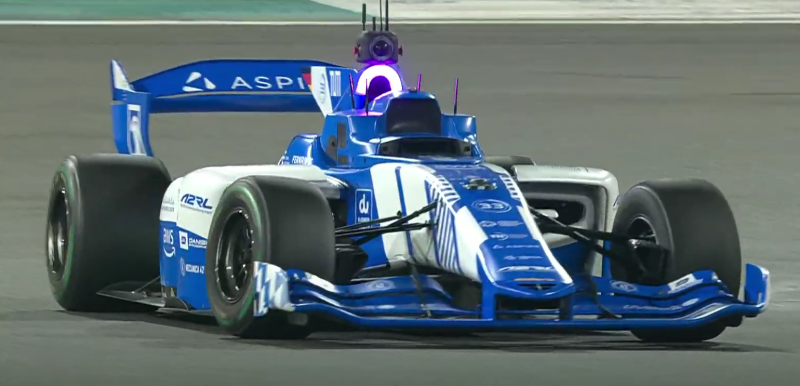This is how several models of domestic diesel locomotives for cargo and passenger traffic appeared at once. One of the first such machines was designed on the basis of the Kharkov Transport Engineering Plant. A prototype locomotive was also built there in 1958.
 Museum exhibit: diesel locomotive 2TE10. Photo: youtube.com
Museum exhibit: diesel locomotive 2TE10. Photo: youtube.comOver the next two years, testing, modifications and elimination of weak points in the design were carried out. This is how the first modifications of the sought-after equipment appeared, and it expanded the geography of its production. Since 1960, such diesel locomotives began to be assembled in Voroshilovgrad (Lugansk).
Development of TE10 production
Despite the fact that VZOR received the fruits of someone else’s labor, in the form of a fully developed design, it was at this plant that most of the TE10 brand freight-passenger diesel locomotives were assembled. And their assembly itself lasted a very long time, almost reaching the half-century mark.
The six-axle diesel locomotive TE10 was equipped with an electric transmission. Although it was originally designed as a single-section version, over time it was often combined as two units, receiving the designation 2TE10.
Technical documentation states that after the assembly was redirected to Voroshilovgrad, it was a completely different locomotive. Changes in the design reached such a level that it seemed time to change its name. Nevertheless, the highly modified diesel locomotive that entered the conveyor belt of the VZOR plant was still called TE10.
True, this did not last long. Indeed, during operation, one of its features appeared, which, in a certain sense, can be considered a weak point. As you yourself understand perfectly well, when transporting people or some kind of cargo, completely different traction qualities are required. In the first case, the weight is much less (as is the number of cars in the train), but the speed of movement is a more important factor. And in the second, the weight is much higher, so what is needed is not speed, but good traction.
 Diesel locomotive TE10 in the Kharkov Museum. Photo: youtube.com
Diesel locomotive TE10 in the Kharkov Museum. Photo: youtube.comIt's always difficult with universal technology. After all, achieving the necessary balance is very difficult. Here, either the passenger service will be too slow, or it will not be able to tow long trains with loaded cars (especially uphill). With TE10, just the second problem arose. It coped well with transporting people on non-electrified sections of the road, but in a cargo role it clearly did not have the necessary power.
Twin locomotives are the best solution
The issue was resolved according to the principle “everything ingenious is simple”: from the very factory, units planned for use in cargo work began to be equipped with doublets. As mentioned above, they received a different designation 2TE10, indicating that the six-axle diesel locomotives were produced in a two-section design. Here are some of the characteristics of the technology:
✅ one-piece body of supporting structure
✅ diesel drive brand 9D100 (later replaced by modification 10D100)
✅ engine power – 3000 l. With
Despite the fact that the diesel locomotive in one section did not always cope with cargo work, its design was advanced both for our and the world production of railway equipment. TE10 was the result of many engineering calculations and innovative proposals. The mere fact that it had a power one and a half times greater than that of one section of TE3 (along with a slightly higher mass) already speaks for itself. And half a century of experience in assembly shops is an equally weighty argument.
 Diesel locomotive bogies TE10. Photo: youtube.com
Diesel locomotive bogies TE10. Photo: youtube.comThe best example of the applied know-how is still its electrical part. The improved power transmission scheme ensured smooth operation of the diesel locomotive and became an example to be followed in later designs. Previously, the Elektrotyazhmash enterprise created traction engines installed in the G1-01 gas turbine locomotive. Six of these examples ended up on board the locomotive we are considering today. Here are their indicators:
✅ model – EDT-340A
✅ rated power – 307 kW
✅ weight - 2,8 tons
✅ support-axial suspension
The locomotive received bogies of the same type as the TE3, and its one-piece body of the supporting structure continued the tradition established by the first Czechoslovak high-speed locomotive and the Baltic electric train ER1. Using a unique AER (automatic excitation control) system, the designers achieved excellent results. Thanks to the obtained dependence of the generator voltage on the current strength, the efficiency of the diesel engine has improved. Let us also pay attention to other characteristics of the technology:
✅ total weight of the diesel locomotive – 138 t
✅ maximum safe speed – 100 km/h
✅ fuel reserve - 5500 l
✅ oil reserve – 1450 l
When forming a joint of two elements (2TE10), the mass and power doubled, while the design speed remained unchanged. Over time, the two-section version of the locomotive received a number of modifications (including three units), which differed in their performance. Let's take their mass as an example:
✅ 2TE10 (V) – 276 t
✅ 2TE10L – 255,6 t
✅ 3TE10 – 414 t
In order to achieve higher speed characteristics, manufacturers offer 2/3TE10UT with an electro-pneumatic brake and gearboxes. In this design, the equipment could accelerate to a record 120 km/h. As an experiment, two copies of the 2TE10G hybrid gas-diesel locomotive were later created.
 Maintenance of TE10 trolleys. Photo: youtube.com
Maintenance of TE10 trolleys. Photo: youtube.comThey used liquefied natural gas as an alternative fuel. This experience is also indicative of the fact that the factory version turned out to be the first world case of using such fuel. To ensure this type of design, the company had to install a tender insert between the main sections, which became a storage facility for cryogenic liquefied gas in the amount of 17 tons. The locomotives also received additional elements that ensured the safe operation of equipment with a hybrid drive.
End of a long story
The popular diesel locomotive continued to be produced in the post-Soviet period. This made it not only a long-liver, but also the most popular railway equipment in the world. Moreover, over time, it was the two-section version that became the main assembly option, which reflects the fact that eight modifications of the original design appeared at once.
One of them appeared at a time when the city had already been renamed Lugansk, it received the index 2TE10U and became the end of the long history of the model and its many modifications. From 1989 until the end of production, 549 two-section locomotives and 79 three-section units were assembled.
For a long time, the technology became the leading one in the sector of Soviet (and later Russian) freight transportation by rail. In addition, 2TE10 was awarded another high title. British ecologists made the necessary measurements and concluded that it is the safest diesel locomotive for the environment (albeit in a non-working position).
 TE10 controls and instruments. Photo: youtube.com
TE10 controls and instruments. Photo: youtube.comThe locomotive finally left the assembly facilities only in 2007, just short of its half-century anniversary. A single-section version used in passenger service was also produced in small sizes during the post-Soviet period. For the same purpose, they created a special TEP10 with increased speed indicators (1960 units were assembled in Kharkov from 1968 to 335).
The most popular modification was the 2TE10M, produced from 1978 to 2007. The total circulation was 3688 pieces. In total, 19 sections of various designs appeared at the facilities of the two plants (of which only 183 were from Kharkov).
